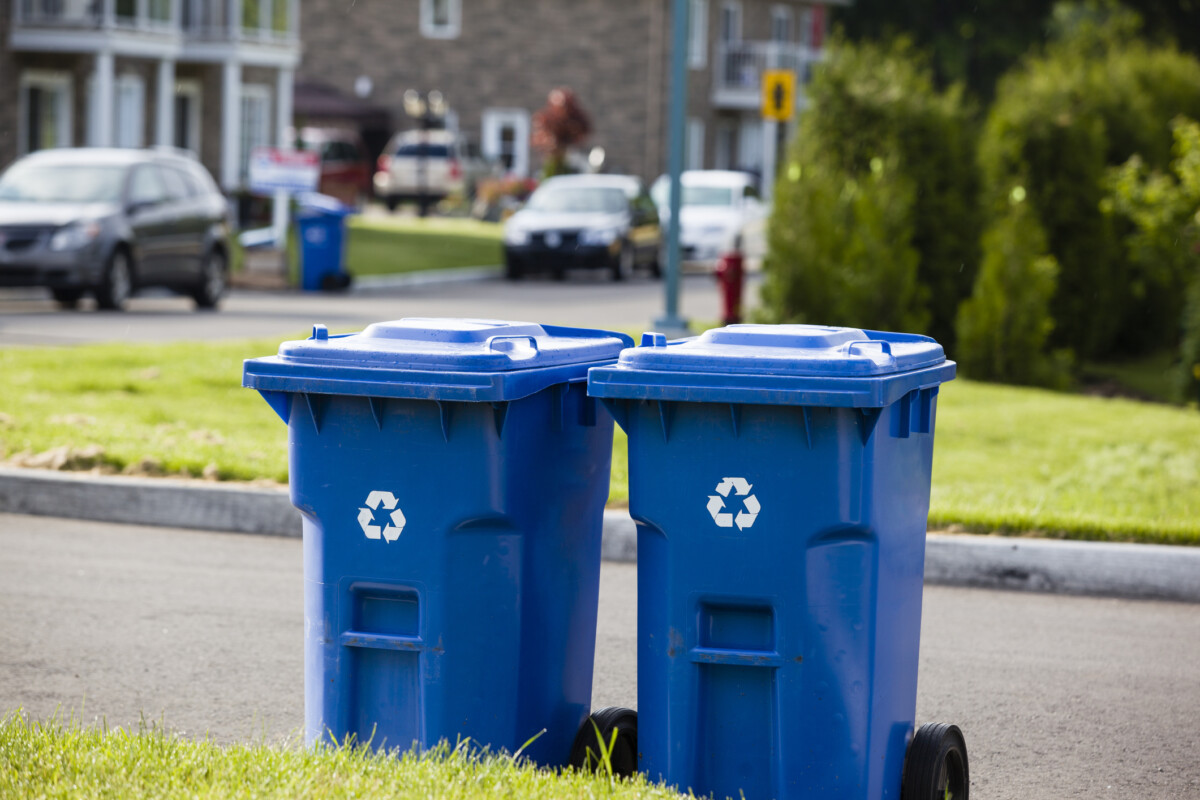Utility payments are a crucial expense for each family, however they’ll add up rapidly and put a pressure in your finances. Whether or not you personal or hire your house, it’s necessary to search out methods to save cash on utilities with out sacrificing vital consolation or comfort. This Redfin information is designed that can assist you categorize your utility bills and establish areas the place you’ll be able to cut back your prices. By adopting energy-efficient habits and making easy investments, you’ll be able to decrease your payments, cut back your carbon footprint, and preserve more cash in your pocket.
So whether or not you’re a house owner in Duluth, MN, and need to cut back your gasoline invoice, or need to cut back your electrical invoice in an condominium in Wilmington, NC, learn on to study every little thing you’ll want to know.
The common price of utilities
On common, US owners and renters spend an average of $5,640.72 per yr on utilities, which is a considerable expense for most individuals. Moreover, utility prices, equivalent to electrical energy, pure gasoline, water, telephone, and web, can range considerably based mostly on components like location, family measurement, and day by day use.
Producing utilities equivalent to pure gasoline and electrical energy additionally contributes considerably to local weather change. Given the rising price of dwelling and the influence utilities have on the setting, discovering methods to save cash and cut back your total use is extra necessary than ever.

Electrical energy
Common electrical invoice: $121.01, or $13.72 per kWh
Electrical energy is the biggest utility price for most individuals within the US, accounting for 23% or extra of their month-to-month bills. It’s additionally an space the place folks could make the biggest influence on their payments.
The fee to produce electrical energy adjustments each minute and varies relying on demand, availability, and gasoline prices. Moreover, due to how the US generates electrical energy and the way shoppers use it, costs are typically highest throughout the summer season and winter. Regardless, most individuals pay a seasonally metered fee based mostly on kilowatt hours (kWh).
Listed below are a couple of suggestions to assist lower your expenses on electrical energy.
1. Flip off lights and home equipment
Retailers proceed supplying energy to gadgets even when they’re turned off. To stop this, change off lights, home equipment, and electronics if you aren’t utilizing them. Additionally, unplug chargers and energy adapters after they’re not charging gadgets.
2. Use energy-efficient lighting
Substitute incandescent bulbs with energy-saving options like compact fluorescent lamps (CFLs) or light-emitting diode (LED) bulbs, which devour much less vitality and last more.
3. Set up a programmable thermostat.
Sensible thermostats mean you can set temperature schedules for various instances of the day, lowering vitality consumption if you’re not at house or throughout sleep.
4. Use energy-efficient home equipment
When shopping for new home equipment, search for the ENERGY STAR label, which signifies they meet strict vitality effectivity tips set by the US Environmental Safety Company.

5. Use good energy strips
These gadgets robotically reduce energy to electronics in standby mode, eliminating vitality waste from “vampire” or “phantom” hundreds.
6. Modify your water heater temperature
Decrease the temperature in your water heater to round 120°F (49°C) to save lots of vitality and cut back the chance of scalding. You too can use photo voltaic thermal water heaters for further effectivity.
7. Cling garments to dry
Use a drying rack or clothesline to air-dry your garments as a substitute of an electrical dryer.
8. Go for pure lighting
Open curtains and blinds throughout the day to benefit from pure daylight and cut back the necessity for synthetic lighting.

Gasoline
Common gasoline invoice: $61.69
Saving on pure gasoline payments requires a mix of energy-efficient practices, correct house upkeep, and investing in environment friendly electrical home equipment. Pure gasoline is a fossil gasoline that may trigger indoor air air pollution and result in well being hazards.
The most typical pure gasoline home equipment are stoves, water heaters, and HVAC techniques. Reducing your utilization is important to saving cash and lowering your footprint. Utility firms usually use a meter and cost a specific amount per therm (100,000 BTU, or 29 kWh).
Listed below are some suggestions that can assist you cut back your pure gasoline consumption:
1. Swap to electrical home equipment
By switching to electrical home equipment, equivalent to stoves, water heaters, and dryers, you’ll be able to cut back your reliance on pure gasoline and assist a cleaner setting. It’s important to think about the supply of your electrical energy, too. Pair electrical home equipment with renewable vitality sources, like photo voltaic, hydropower, and wind, to get essentially the most financial savings.
2. Modify your thermostat
Decrease the thermostat throughout winter months and lift it throughout summer season months if you’re not at house or whilst you’re sleeping. Each diploma of adjustment can lead to 3% savings, which provides up over time.
3. Insulate your house
Correct insulation helps preserve your house heat throughout winter and funky throughout summer season, lowering the load in your water heater and HVAC system. Insulate partitions, attics, and flooring, and seal gaps round home windows and doorways to forestall drafts.
Insulating your water pipes can also be important, particularly in excessive local weathers.
4. Set up a programmable thermostat
A programmable thermostat robotically adjusts the temperature based mostly in your day by day schedule, guaranteeing your house is snug if you’re there and conserving vitality if you’re away.
5. Keep or substitute your heating system
Recurrently clear and substitute furnace filters, and schedule annual upkeep checks to maintain your heating system operating effectively. Another choice is to change out your furnace with a geothermal warmth pump system, which is environment friendly and fully carbon-neutral. You’ll be able to obtain tax breaks and incentives for switching as nicely.
6. Use weatherstripping
Apply weatherstripping round home windows and doorways to seal any gaps that is perhaps letting chilly air in and heat air out throughout winter months.

Water
Lowering your water use can imply decrease prices and decrease pure influence, which is very necessary if your house is vulnerable to drought. The common US resident makes use of 84 gallons of water on daily basis. This equates to over 10,000 gallons of water monthly for a household of 4. Firms additionally use different billing rate strategies, that are:
- Flat
- Uniform
- Rising block
- Declining block
- Seasonal
- Drought
- Water-budget based mostly
The most typical fee sort is a uniform fee, which measures water utilization with a water meter and fees a specific amount per gallon. Nonetheless, in case your metropolis makes use of a flat fee price, lowering your water utilization supplies no financial profit. Lastly, some municipalities bill water and sewer together, which makes lowering utilization much more necessary.
Listed below are 9 suggestions that can assist you cut back your water invoice at house.
1. Repair leaks
Leaking taps, pipes, and bogs can waste a major quantity of water over time and are a major contributor to excessive water payments. Repair your leaks as quickly as you discover them, and take into account putting in a leak detector.
2. Set up water-efficient fixtures
Substitute previous bathe heads, taps, and bogs with low-flow or water-saving fashions. Many governments even supply rebates and incentives for owners who use water-saving home equipment. WaterSense is a superb useful resource that can assist you discover environment friendly home equipment and fixtures and learn how much money and water it can save you.
3. Use the dishwasher effectively
Solely run the dishwasher when it’s full, and go for the shortest washing cycle when potential. In case you wash dishes by hand, don’t go away the faucet operating constantly.
4. Restrict bathe time
Shorten your showers to save lots of each water and vitality. A five-minute bathe makes use of considerably much less water than a shower.
5. Gather rainwater
Use a rain barrel or different containers to gather rainwater for watering crops, washing vehicles, or different outside cleansing duties. Many governments supply incentives for putting in rain barrels, equivalent to lowered water payments and tax breaks.
Another choice is to set up a rain backyard, which collects rainwater runoff from onerous surfaces round your house and lets it slowly take in again into the bottom. These is usually a nice answer for these dwelling in moist climates or who desire a distinctive landscaping characteristic.
6. Water crops properly
Water your crops early within the morning or late within the night to attenuate evaporation. You too can use drip irrigation or soaker hoses to water crops instantly at their roots.
7. Use a brush as a substitute of a hose
Sweep driveways, sidewalks, and patios relatively than utilizing a hose to wash them.
8. Reuse water
Gather unused water from cooking or washing vegetables and fruit to water crops or flush bogs.
9. Set up a water meter
A water meter can assist you monitor your water utilization and establish areas the place it can save you. Many cities already cost based mostly on metered use, however a meter could make a giant distinction in case your space doesn’t.
Trash, recycling, and compost
Common assortment invoice: $25-$100
Many areas lump trash and recycling collectively and cost individually for compost. Moreover, some cities don’t cost for recycling, whereas others don’t have composting packages. It’s necessary to know your native assortment insurance policies to keep away from being overcharged and cut back your environmental influence.
Whereas most municipalities cost a flat fee for all pickup companies, they usually embody extra fees for extra collection. Due to this, the easiest way to scale back your waste assortment invoice is to restrict the quantity of waste you produce and concentrate on recycling. Some areas additionally use a pay-as-you-throw program (variable-rate pricing), which fees based mostly on the quantity somebody throws away.
Listed below are a couple of suggestions to assist cut back waste:
- Use reusable containers
- Cook dinner at house
- Purchase in bulk
- Thrift when potential
- Go paperless
Understanding what you’ll be able to and may’t throw away can also be important, as each metropolis has totally different recycling and composting capabilities. Many merchandise folks imagine are compostable and recyclable are actually trash of their space. Even merchandise that publicize themselves as recyclable and compostable usually aren’t in sure cities.
Different prices
Many individuals embody telephone and web fees of their month-to-month utility payments. There are additionally different prices particular to sure areas, equivalent to stormwater, conservation, emergency medical companies, and extra. Lookup your native utility assertion to assessment precisely what you’re being billed for.

Remaining ideas
No matter your methodology, studying how to save cash on utilities can decrease your month-to-month prices and reduce your environmental footprint.Apart from lowering utility prices, committing to large-scale sustainability will be the easiest way to scale back your month-to-month payments. You are able to do this by certifying your house by ENERGY STAR or LEED, each of which have strict vitality and sustainability requirements for properties.

